Choosing between a woven vs embroidered patch can be confusing if you’re not sure which one suits your needs. Both types of patches are popular for customizing clothing, bags, and uniforms, but they have different looks and benefits. Woven patches are great for detailed designs with a smooth finish, while embroidered patches give a more classic, textured feel with raised stitches.
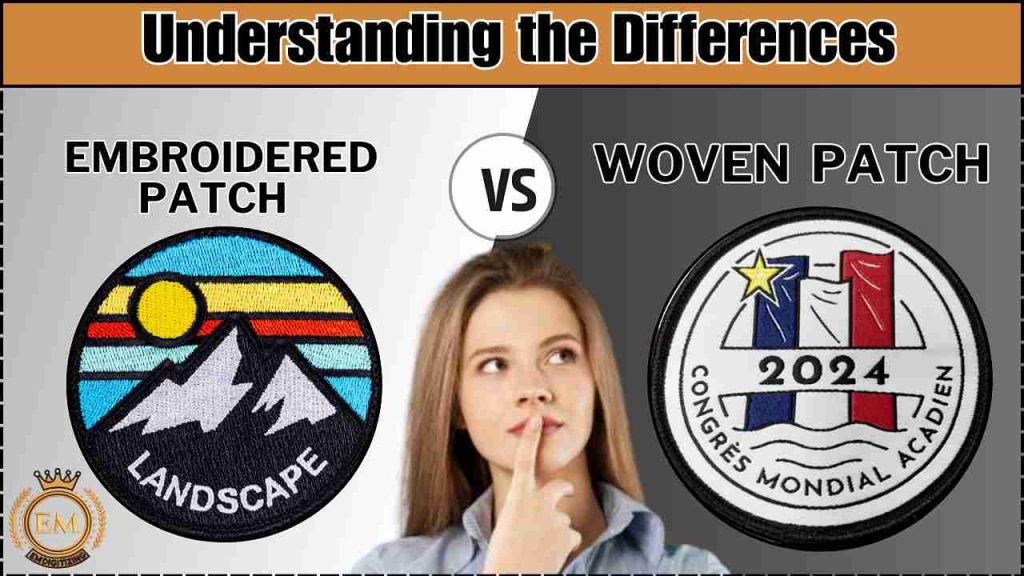
In this article, we’ll explore the key differences between woven and embroidered patches, helping you understand which one is the right choice for your project. Whether you’re after precision or a bold, traditional look, this guide will clarify everything you need to know!
Woven vs Embroidered Patch: Understanding the Differences
What is a Woven Patch?

It is made using thinner threads that are woven together to create a patch with fine details. These patches use a weaving technique similar to creating fabric, which allows for intricate and precise designs. The threads are tightly woven, which results in a smooth and flat finish. Unlike embroidered patches, woven patches do not have raised stitches, giving them a cleaner and more detailed appearance.
Benefits
- Fine Detail: Ideal for designs with intricate details, small text, or complex images, as the weaving process allows for more precision.
- Smooth Texture: The flat surface gives a sleek, polished look, which is perfect for logos or detailed artwork.
- Thin and Flexible: Generally thinner and more flexible, making them more comfortable to wear and easier to sew onto garments.
- Durability: Long-lasting, and their designs don’t fade or wear out easily over time.
Drawbacks
- Less Texture: Lack the textured, 3D effect that embroidered patches offer, which may be less appealing for those seeking a more traditional patch look.
- Limited Thread Colors: The weaving process may limit the number of thread colors used, making it challenging to achieve multi-color designs with perfect shading.
What is an Embroidered Patch?
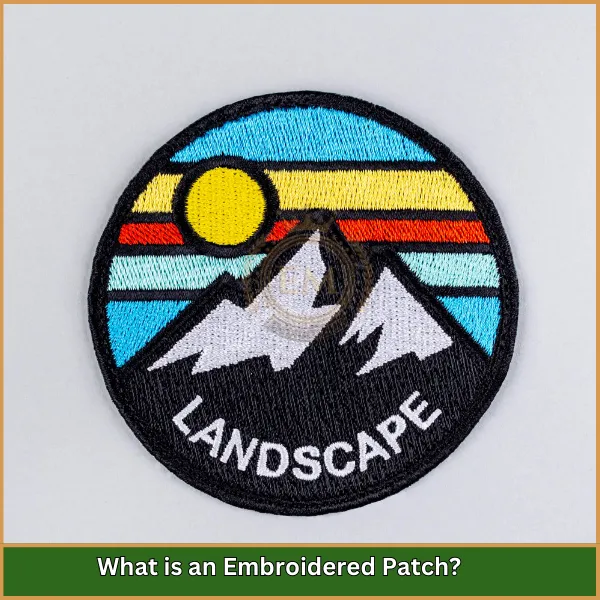
It is created by stitching threads onto a fabric backing to form the design. The threads are raised above the backing material, giving the patch a textured, three-dimensional look. These patches are often used for bold and simple designs, logos, or symbols that don’t require intricate details. They are a popular choice for military insignia, sports team logos, and uniforms.
Benefits
- Classic Look: Provide a traditional, textured appearance, making them ideal for classic designs or logos that need to stand out.
- Durability: Highly durable and can withstand wear and tear, making them suitable for heavy-duty use.
- Wide Range of Colors: Can incorporate a broad range of thread colors, allowing for vibrant, eye-catching designs.
- 3D Texture: The raised stitching creates a textured, dimensional effect that adds depth to the patch, giving it a more substantial feel.
Drawbacks
- Less Detail: Not suitable for designs with fine details or small text, as the thick threads used in embroidery can make the design appear less sharp.
- Bulkier: The raised stitches and thicker threads make them bulkier and less flexible compared to woven patches, which may not be ideal for certain applications.
Main Differences Between Woven vs Embroidered Patches
When deciding between woven patches vs embroidered patches, it’s essential to understand the key differences. Each type of patch has its strengths and is better suited for certain designs or purposes.
- Visual Appearance
- Detail and Precision
- Texture
- Durability
- Thickness and Flexibility
- Color Range
- Cost
1. Visual Appearance
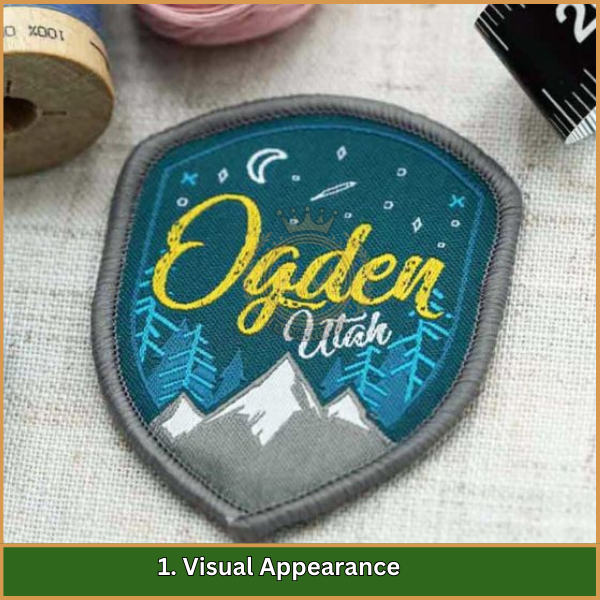
Woven patches have a sleek and smooth appearance due to the weaving process, which creates a flat surface. This makes woven patches ideal for achieving a clean, sharp look, especially for logos or designs with intricate details.
In contrast, embroidered patches have a raised, textured surface, giving them a more traditional and bold appearance. The raised stitches of embroidered patches add depth and dimension, making them stand out more visually.
2. Detail and Precision
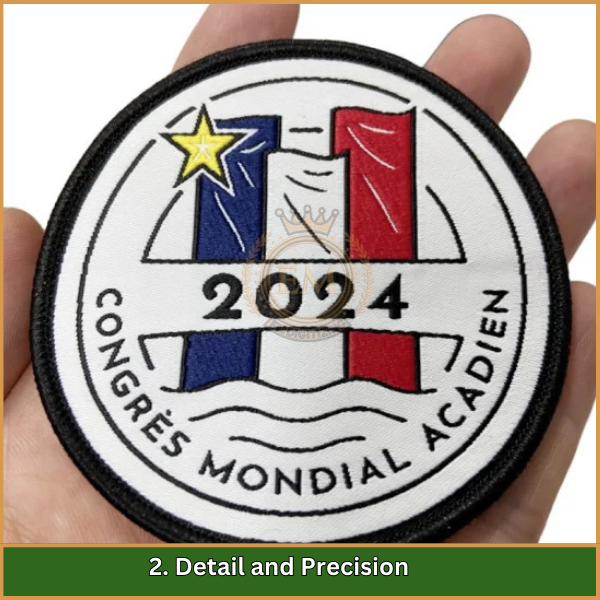
When it comes to detail and precision, embroidered vs woven patches differ significantly. Woven patches are created using thinner threads that are woven tightly together, allowing for much finer details. This makes woven patches perfect for designs that require intricate artwork, small lettering, or delicate features.
On the other hand, embroidered patches use thicker threads and are stitched onto a fabric backing, which limits the amount of detail that can be included. As a result, embroidered patches are better suited for simpler designs with bold lines and larger elements.
3. Texture
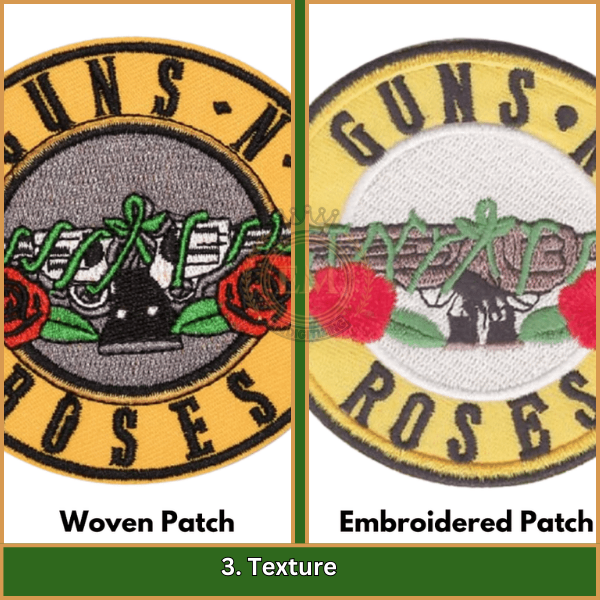
The texture of the two types of patches is also quite different. Woven patches have a smooth, flat texture due to the weaving process, which gives them a refined and polished finish. This flat texture allows for a more modern and streamlined look.
In contrast, embroidered patch vs woven patch comparison shows that embroidered patches have a textured and raised surface because of the stitching process. The raised threads give the patch a 3D effect, making it more tactile and visually engaging.
4. Durability
Both woven and embroidered patches are durable, but embroidered patches tend to be slightly more robust. The thick threads used in embroidered patches provide greater strength and resistance to wear and tear, making them well-suited for heavy-duty use, such as on uniforms, bags, or jackets.
Woven patches, while durable, are generally thinner and may not hold up as well under constant rough use. However, for everyday wear or decorative purposes, woven patches offer sufficient durability.
5. Thickness and Flexibility
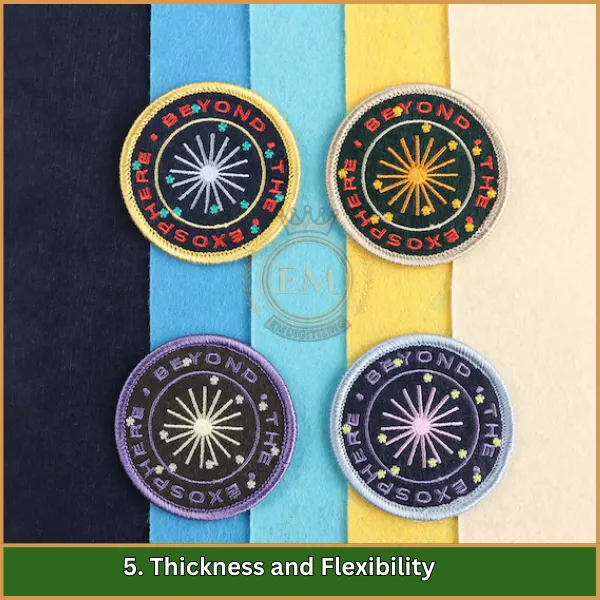
Woven patches are generally thinner and more flexible than embroidered patches. The woven construction allows them to lie flat against the fabric, making them more comfortable to wear, especially on clothing. Their flexibility also makes them easier to sew onto garments.
In contrast, embroidered patches are bulkier because of the raised stitches. This added thickness can make them less flexible and may feel heavier when attached to fabric. For designs that require a lighter and more flexible patch, woven patches are often the better choice.
6. Color Range
When comparing the color options, woven patches may have some limitations. The weaving process uses thinner threads, which can make it challenging to incorporate multiple colors into a design. However, woven patches can still produce clean and vibrant colors, just with less shading and gradient options.
On the other hand, embroidered patches offer a wider range of colors. The embroidery process allows for the use of more thread colors, making it possible to create more complex and colorful designs. This makes embroidered patches ideal for designs that need bright, eye-catching colors.
7. Cost
In terms of cost, woven patches tend to be more affordable than embroidered patches. The production process for woven patches is generally simpler and faster, which reduces the overall cost. This makes woven patches an economical option for designs that require high precision but don’t need the added texture of embroidery.
Embroidered patches, however, are typically more expensive due to the labor-intensive stitching process and the use of thicker materials. The detailed work involved in creating the raised texture of embroidered patches adds to the production cost, but it also results in a more durable and visually striking patch.
Bottom Line
When it comes to choosing between a woven vs embroidered patch, it really depends on the look you’re going for. Woven patches are great for detailed designs with a smooth finish, while embroidered patches give you a more bold and traditional style with raised stitching.
At EMDigitizing, we can help you create the perfect patch with our vector art services. We offer fast turnaround, affordable prices, and always deliver high-quality results. And if it’s your first time working with us, you’ll get a 50% discount on your first order.
Let’s make your custom patches stand out with EMdigitizing!
FAQs
Woven patches are made by weaving threads together to create a design, allowing for finer detail and a flatter appearance, whereas embroidered patches are stitched onto a fabric backing, giving them a raised, textured look.
Woven patches are generally more durable than embroidered patches because they are less likely to snag due to their flat and tight weave; however, both are quite sturdy and long-lasting with proper care.
Yes, both woven and embroidered patches can be customized with a variety of colors, designs, and sizes to meet specific needs or branding requirements.
Embroidered patches are commonly used for uniforms, such as military, emergency services, or sports teams, due to their classic textured look; woven patches are often used for detailed artwork on apparel, hats, or bags where precision is needed.
